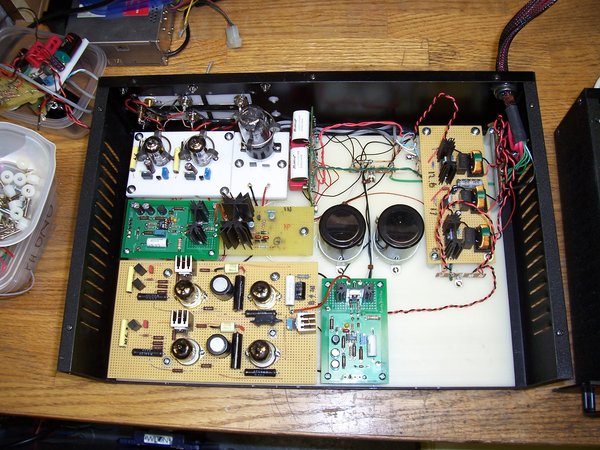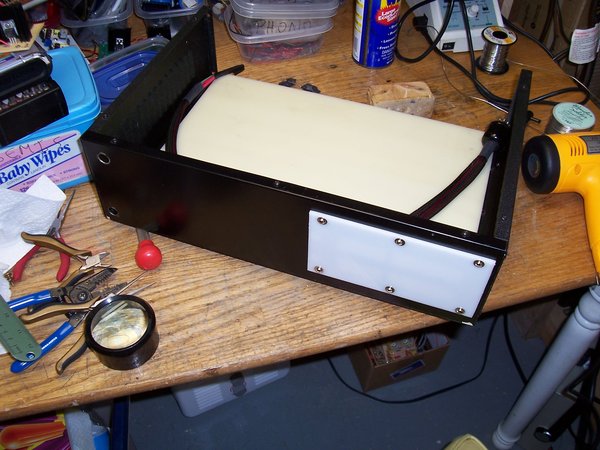ratbagp wrote: How thick is the Delrin and how rigid? Do you use some additional support for the iron?
During the discussion on soapstone as the plinth for the turntable, I was pondering whether it could be used to hold the iron and tubes. Soapstone apparently cuts fairly easily and should be reasonably inert.
ray
Ray,
I've used and continue to use Delrin in my electronics projects, ever since Charlie turned me on to it.
It is very rigid and hard (in fact, it's used as a bearing material in some race car suspension applications. I've broken off many a 6-32 tap in it. I've used thicknesses as thin as 1/4" for rear panels, up to 2" thick for mounting bases under circuit boards.
I look for cut pieces on eBay, since it is quite expensive. One of the best, if not the best sounding turntable I've ever heard has a Delrin plinth. It is superb. I dare not tell Roscoe what to do, but there is zero doubt what I'd do for a plinth.
As they say "highly recommended"!
A couple of pictures attached of my phono stage in a junk box, but with a ~0.75" piece of Delrin in the bottom and 0.25" Delrin as a mounting plate for the jacks.
Stuart
| Attachments: |

100_2950.JPG [ 1.25 MiB | Viewed 34138 times ]
|

100_2934.JPG [ 892.75 KiB | Viewed 34138 times ]
|
|